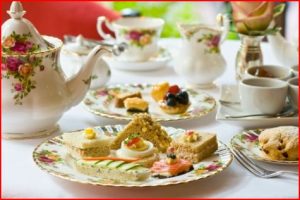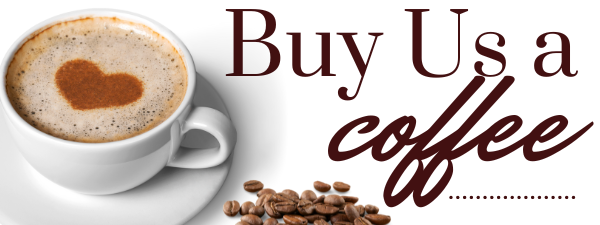No products in the cart.
“High Tea” in Cornwall courtesy of “Down Town Abbey”
 On Sunday, May 15th, “High Tea” will be served at The NAV Centre in Cornwall, located at 1950 Montreal Rd.
On Sunday, May 15th, “High Tea” will be served at The NAV Centre in Cornwall, located at 1950 Montreal Rd.
High Tea will be served at approximately 3.00 pm., during the intermission of Participation Music Hall Theatre’s Production of “A Down Town Abbey Spring Special.” The show starts at 2 pm.
The Lady of the House, Lady Atherby Handcock insisted on High Tea being served on the auspicious occasion of Participation Music Hall Theatre’s Production of “A Down Town Abbey Spring Special featuring May Flowers and Naughty Goings On.”
Mrs Haycock, the Housekeeper, and Thomas Fullerton, the newly appointed Butler will partake in the event.
The NAV Centre’s Executive Chef Luc McCabe, a recent competitor on the Food Network’s Chopped Canada, will prepare the delectable Down Town Abbey “High Tea” Menu.
The NAV Menu
Coffee, Decaffeinated Coffee, Tea Crudités & Dip Pasta Salad Assorted Finger Sandwiches served on White & Whole Wheat Bread Chef’s Choice of Assorted Desserts & Cookies
Tickets for the High Tea plus Participation Music Hall Theatre’s “A Down Town Abbey Spring Special” are $45 each, including tax and service charges.
What would you expect from “Down Town Abbey” but good English protocol? High Tea At Three.
So join us at the NAV Centre in Cornwall for a mélange of musical madness where Louis Armstrong and Betty Smith meet Mr. Bean and Monty Python for a fun filled celebratory afternoon, which includes a delicious British High Tea.
You’re bound to say “Jolly Good Show Old Chap!”
To buy tickets call Robert Hardy @ 613-525-9943 or visit www.participationthemusic.com
The History of Afternoon Tea
Tea consumption increased dramatically during the early nineteenth century and it is around this time that Anna, the 7th Duchess of Bedford is said to have complained of “having that sinking feeling” during the late afternoon. At the time it was usual for people to take only two main meals a day, breakfast, and dinner at around 8 o’clock in the evening. The solution for the Duchess was a pot of tea and a light snack, taken privately in her boudoir during the afternoon. Later friends were invited to join her. Before long all of fashionable society was sipping tea and nibbling sandwiches in the middle of the afternoon.
Nowadays, some British hotels serve a ‘high tea’. Traditionally, the upper classes would serve a ‘low’ or ‘afternoon’ tea around four o’clock. The middle and lower classes would have a more substantial ‘high’ tea later in the day, at five or six o’clock, in place of a late dinner. The names derive from the height of the tables on which the meals are served, high tea traditionally being served at the dinner table.
What is High Tea?
The drinking of tea not only became a social event for the upper classes, it altered the time and manner in which they took tea. For the rich, Afternoon Tea became the bridge between meals because many wouldn’t eat their evening meal until maybe 8pm. As such, Afternoon Tea became a ‘mini meal’ in itself.
This was all well and good for the upper classes, but the working classes ran to a different schedule and a different budget. Tea was still quite expensive at the time and the working classes could not afford to waste it. A tired worker wouldn’t arrive home until six in the evening, and when he did, you may be sure he was hungry! Thus, in northern England and southern Scotland (the industrial areas), the working classes’ evening meal evolved: “High Tea.”
High Tea usually involved a mug of tea, bread, vegetables, cheese and occasionally meat. Variations could include the addition of pies, potatoes and crackers.
So while Afternoon Tea was largely a social event for their upper class counterparts, High Tea was a necessary meal in the eighteenth and nineteenth centuries. This traditional High Tea still exists for some parts of the North of England and the South of Scotland.
Why is it called ‘High Tea’?
A possible explanation why this type of meal was called ‘High Tea’ is the fact that it was eaten at a table. In comparison, Afternoon Tea was taken whilst seating in low, comfortable chairs or sofas. Of course, soon after, the upper classes developed their own variation and also called it ‘high tea’. For them, it was a meal that could be eaten when their servants were away or not available, as it was so easy to prepare.




